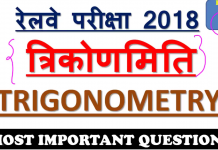http://gre.prepscholar.com
Want to ace the GRE quantitative section? This video explains EXACTLY how to answer Quantitive Comparison questions on the 2018 GRE.
There are typically 15 Quantitative Comparison questions on any given GRE exam. With only 40 Quant questions, this means that ~38% of GRE Quant questions are Quantitative Comparison, so this question type accounts for more than a third of your quant score — that’s a lot! So it’s important that we master this question type.
Unfortunately, Quantitative Comparison is a particularly weird question type. Here are the basics. Each Quantitative comparison question has the same structure:
First, we have the question stem. The question stem provides us background information for the problem that we can assume to be true. The question stem can take many forms: it may be a sentence or sentences, it may be an equation, it may be a diagram, it may be some combination of the three — sometimes, when the problem requires no background information, there is no question stem at all
Then we have two quantities, labelled Quantity A and Quantity B. Quantity A will always appear on the left, while Quantity B will always appear on the right. Like the question stem, a quantity can take many forms — it may be a number, a variable, an expression, a phrase, etc.
Finally, each question has the same four answer choices, of which we can only choose one:
Quantity A is greater.
Quantity B is greater.
The two quantities are equal.
The relationship cannot be determined from the information given.
So the goal of any given Quantitative comparison question is first to determine whether or not we *can* determine the relationship between Quantity A and Quantity B, and second, if we can determine the relationship, to do so.
Why would the test ask us to do this? This isn’t how we normally test math — why can’t we stick to, 5 answer multiple choice questions, where one answer is correct? The reason is that these questions don’t really test Math. In fact, none of the questions on the Quant section do — the GRE uses math, vocabulary, etc. as a foundation to test higher-level skills, like critical reasoning — the things that grad schools and future employers actually care about.
Quantitative Comparison questions test a couple things specifically. One is determining the value of information to making decisions. We get a limited amount of information in the question stem and Quantities. It’s up to us to figure out whether it’s enough information to solve.Another is avoiding and testing assumptions, specifically by finding edge cases. A set of quantities that might be equal if we know that x is positive may not be equal if we consider that x may be negative. One quantity may be greater than the other in all cases *except* when y = 0. Have we considered what would happen if n were a fractional value between 0 and 1? And so on.
source













![CY_GATE_2019_PHYSICAL_SPECTROSCOPY_[ELECTRONIC_BASIC]_All IN ONE_[Short_Trick]_2018-19_PART_1ST - Videos](https://trends.edugorilla.com/wp-content/uploads/sites/8/2018/08/cy_gate_2019_physical_spectroscopy_electronic_basic_all-in-one_short_trick_2018-19_part_1st-218x150.jpg)


















![24 August 2018 – The Indian Express Newspaper Analysis हिंदी में – [UPSC/SSC/IBPS] Current affairs - Videos](https://trends.edugorilla.com/wp-content/uploads/sites/8/2018/08/a520-218x150.png)



